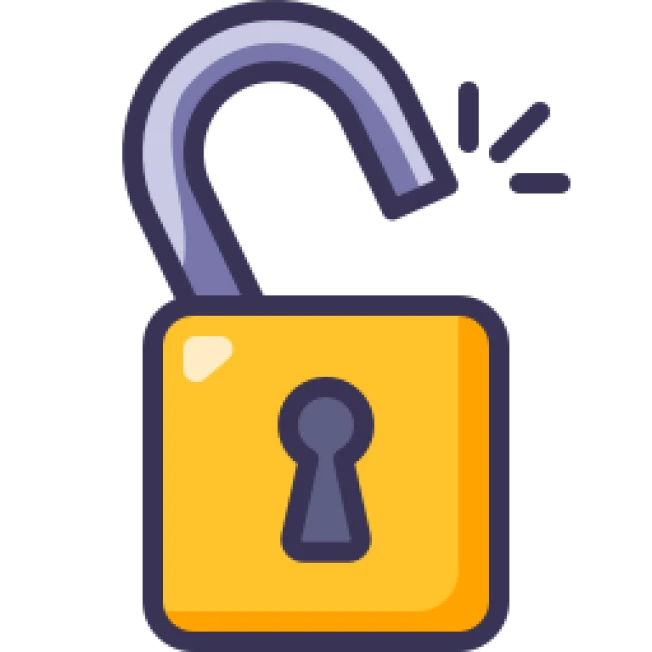Technical Interview Preparation
- Technical Interview Questions
- HTML Interview Questions
- CSS Interview Questions
- JavaScript Interview Questions
- React JS Interview Questions
- Node.js interview questions
- MERN Stack Interview Questions
- Data Analytics Interview Questions
- C++ Technical Interview Questions
- Python Interview Questions
- Java Interview Question
- Most Asked Coding Question
- DSA interview questions
- Computer Network Interview Question
- Cloud Computing Interview Question
- Other Related Links
Top 30+ HTML Interview Questions and Answers
Top HTML Interview Questions and Answers asked in Interview
Top HTML Interview Questions and Answers asked in Interview
HTML Interview Questions – Are you preparing for an interview and curious to know what type of HTML Interview Questions asked by the interviewer? HTML Interview Questions is the solution for your curious things. This page brings Top HTML Interview questions asked in the off-campus as well as on-campus placements.
This page provides well structured and in sequence questions asked by interviewer, Prepare well and go through each and every questions so that your preparation does not go in vain. Let’s start with Learning Mode on and sleeping mode off 🙂
Introduction to HTML
HTML, which stands for HyperText Markup Language, is the foundational language used for creating and structuring content on the World Wide Web. Introduced in 1993, HTML serves as a standard text formatting language that defines the structure and layout of web pages. It is interpreted by web browsers, which use HTML code to determine what content to display and how to present it to users.
Uses of HTML
The primary use of HTML (HyperText Markup Language) is to create and structure content for web pages on the World Wide Web. It serves as the foundation for building websites and web applications. Below are the key uses of HTML:
- Defines the Structure of Web Pages
- Embeds Multimedia Content
- Creates Hyperlinks
- Forms and User Input
- Accessibility and Semantics
- Cross-Browser Compatibility
Get PrepInsta Prime & get Access to all 200+ courses offered by PrepInsta in One Subscription
HTML Interview Questions and Answers for Freshers
Ques 1: What is HTML?
Ans.
HTML (HyperText Markup Language) is the standard language for creating web pages. It structures content using elements like headings, paragraphs, and links, which browsers interpret to display text, images, and multimedia. HTML documents consist of a basic skeleton:
- The <!DOCTYPE html> declares the document type.
- The <html> tag encloses the entire content.
- The <head> contains metadata like the title, while the <body> holds the visible content.
- HTML is essential for web development, forming the backbone of all websites.
Ques 2: What are tags and attributes in HTML?
Ans.
Tags are used to define the structure and formatting of content in HTML, such as <p> for paragraphs. Attributes provide additional information about an element and are used within the opening tag. For example, in <p align=”center”>, align is an attribute that centers the paragraph.
Ques 3: What are void elements in HTML?
Ans.
Void elements are HTML elements that do not have a closing tag or do not require one. Examples include <br />, <img />, and <hr />. These elements are self-contained and do not wrap around any content.
Ques 4: What are the different types of lists in HTML?
Ans.
HTML supports three types of lists:
- Ordered Lists (<ol>): Numbered lists (e.g., 1, 2, 3).
- Unordered Lists (<ul>): Bulleted lists (e.g., •, •, •).
- Definition Lists (<dl>): Used for terms and their definitions (e.g., <dt> for term, <dd> for definition).
Ques 5: Define multipart form data.
Ans.
Multipart form data is a value of the enctype attribute used in forms (<form>).
Purpose: It is used when uploading files to a server, as it encodes the form data in multiple parts, allowing file data to be sent.
- It enables file uploads in web applications.
HTML Layout Interview questions
Ques 6: Describe HTML layout structure.
Ans.
An HTML layout typically includes:
- <header>: Contains introductory content.
- <nav>: Holds navigation links.
- <section>: Defines sections of content.
- <article>: Represents independent content.
- <aside>: Contains sidebar content.
- <footer>: Includes footer information.
Note – Semantic tags improve readability, accessibility, and SEO.
Ques 7: What are the different kinds of Doctypes available?
Ans.
The three types of Doctypes are:
- Strict Doctype: Enforces strict HTML rules.
- Transitional Doctype: Allows older HTML features.
- Frameset Doctype: Used for frames-based layouts.
Remember, Doctypes define the HTML version and rules for the document.
Ques 8: How to indicate the character set being used by a document in HTML?
Ans.
The character set is specified using the <meta> tag inside the <head> section. For example:
<meta charset="UTF-8">
Ques 9: What is the difference between strong, bold, em, and i tags?
Ans.
- <strong> and <b> both make text bold, but <strong> adds semantic importance.
- <em> and <i> both italicize text, but <em> adds semantic emphasis.
Semantic tags improve accessibility and SEO.
Ques 10: What is the significance of head and body tags in HTML?
Ans.
- <head>: Contains metadata, scripts, and stylesheets.
- <body>: Holds the visible content of the webpage.
- The <head> defines the page setup, while the <body> contains the content.
Ques 11: Can we display a web page inside a web page?
Ans.
- Yes, using the <iframe> tag, you can embed another webpage within the current page.
- It allows embedding external content like maps or videos.
Ques 12: How is Cell Padding different from Cell Spacing?
Ans.
Cell Padding: Space between the cell content and its border.
Cell Spacing: Space between adjacent cells.
Padding affects content spacing, while spacing affects cell gaps.
Ques 13: How can we club two or more rows or columns into a single row or column?
Ans.
- Use the rowspan and colspan attributes in <td> or <th> tags to merge cells.
- It allows for complex table layouts.
Ques 14: What is a favicon in HTML?
Ans.
A favicon (short for “favorite icon”) is a small icon associated with a particular website or webpage that appears next to its title in browser tabs or bookmarks. To add a favicon, include a link tag in your document’s head section:
<link rel=”icon” href=”/path/to/favicon.ico” type=”image/x-icon”>
Using favicons enhances brand recognition and improves user experience by making it easier to identify your site among multiple open tabs.
Ques 15: Is it possible to change an inline element into a block-level element?
Ans.
- Yes, using CSS. For example, display: block; can convert an inline element like <span> into a block-level element.
- It provides flexibility in layout design.
Ques 16: In how many ways can we position an HTML element?
Ans.
- Elements can be positioned using CSS properties like static, relative, absolute, fixed, and sticky.
- Positioning controls the layout and placement of elements.
Ques 17: In how many ways can you display HTML elements?
Ans.
- Elements can be displayed using CSS properties like block, inline, inline-block, flex, grid, and none.
- Display properties control how elements are rendered on the page.
Ques 18: What is the difference between display: none and visibility: hidden?
Ans.
- display: none: Removes the element from the document flow.
- visibility: hidden: Hides the element but retains its space in the layout.
- display: none completely removes the element, while visibility: hidden keeps its space.
Ques 19: How to specify the link in HTML and explain the target attribute?
Ans.
- Use the <a> tag with the href attribute. The target attribute specifies where to open the link, e.g., _blank opens in a new tab.
- It controls how links behave when clicked.
Ques 20: How do you ensure cross-browser compatibility when developing with HTML?
Ans.
To ensure cross-browser compatibility when developing with HTML:
- Use Standard Markup: Stick to valid HTML standards.
- Test Across Browsers: Regularly test your site on multiple browsers (Chrome, Firefox, Safari).
- Use CSS Resets: Implement CSS resets or normalize stylesheets to minimize default styling discrepancies.
- Utilize Feature Detection: Use libraries like Modernizr to detect features rather than relying on browser detection alone.
- Progressive Enhancement: Build basic functionality first and enhance features progressively based on browser capabilities.
Ques 21: What does it mean to "validate" an HTML document?
Ans.
Validating an HTML document means checking its markup against established standards set by organizations like W3C (World Wide Web Consortium). Validating ensures that your code follows best practices and reduces errors across different browsers:
- You can validate your code using online tools like the W3C Markup Validation Service by pasting your code or uploading files directly.
Ques 22: Can you explain what forms of input types exist in HTML?
Ans.
HTML provides various input types that dictate how data should be entered into forms:
- text: A single-line text input.
password: A password field where characters are obscured. - email: Input specifically for email addresses.
- checkbox: A box that can be checked or unchecked.
- radio: A single-choice selection among multiple options.
- file: Allows users to upload files.
- date: A date picker interface.
These input types enhance user experience by providing appropriate interfaces based on expected data formats.
Advance Level HTML Interview Questions
Ques 23: What is the purpose of the srcset attribute in the tag, and how does it enhance responsive design?
Ans.
The srcset attribute in the <img> tag allows developers to specify multiple image sources for different device resolutions and display conditions.
- By providing a list of image files along with their corresponding sizes or pixel densities, the browser can choose the most appropriate image to display.
- This enhances responsive design by ensuring that images are optimized for various screen sizes and resolutions, leading to better performance and user experience.
For example:
<img src="image-default.jpg" srcset="image-480w.jpg 480w, image-800w.jpg 800w" sizes="(max-width: 600px) 480px, 800px" alt="Responsive Image">
Ques 24: Can you explain the difference between and tags in HTML?
Ans.
The <a> (anchor) tag is used to create hyperlinks, allowing users to navigate from one page to another or to different sections within the same page. It uses the href attribute to specify the destination URL.
For example:
<a href="https://www.example.com">Visit Example</a>
On the other hand, the <link> tag is primarily used within the <head> section of an HTML document to define relationships between the current document and external resources, such as stylesheets or prefetching instructions.
- It is a self-closing tag and does not create clickable links.
For example:
<link rel="stylesheet" href="styles.css">
- In summary, <a> is for creating navigable hyperlinks within the content, while <link> is for linking external resources to the document.
Ques 25: How does the defer attribute affect the execution of a script in HTML?
Ans.
The defer attribute, when added to a <script> tag, instructs the browser to download the script in the background while continuing to parse the HTML document. The deferred script is executed only after the entire HTML document has been parsed. This is particularly useful for scripts that do not modify the DOM during parsing, as it prevents render-blocking and enhances page load performance.
For example:
<script src="script.js" defer></script>
- It’s important to note that the defer attribute is only effective for external scripts and maintains the order of execution if multiple deferred scripts are present.
Ques 26: What are Web Workers in HTML5, and how do they improve web application performance?
Ans.
Web Workers in HTML5 provide a mechanism to run JavaScript scripts in background threads separate from the main execution thread of a web application.
- This allows for the execution of complex or time-consuming tasks without blocking the user interface, resulting in smoother performance and improved responsiveness.
- Web Workers operate independently and do not have direct access to the DOM, but they can communicate with the main thread through message passing.
Here’s a basic example of creating a Web Worker:
// main.js
const worker = new Worker('worker.js');
worker.postMessage('Start');
// worker.js
self.onmessage = function(event) {
// Perform computations
self.postMessage('Task completed');
};- In this example, worker.js runs in the background, allowing the main application to remain responsive during the execution of the worker’s tasks.
Ques 27: Describe the purpose and usage of the tag in HTML5.
Ans.
The <template> tag in HTML5 is used to define a fragment of HTML that is not rendered immediately when the page loads.
- Instead, the content within a <template> can be cloned and inserted into the document dynamically using JavaScript.
- This is particularly useful for scenarios where you need to generate multiple similar elements, such as list items or cards, based on dynamic data. The content inside a <template> is inert, meaning it doesn’t affect the page layout or interact with scripts until it is activated.
Here’s an example:
<template id="item-template">
<div class="item">
<h2></h2>
<p></p>
</div>
</template>
<script>
const template = document.getElementById('item-template');
const clone = template.content.cloneNode(true);
clone.querySelector('h2').textContent = 'Item Title';
clone.querySelector('p').textContent = 'Item Description';
document.body.appendChild(clone);
</script>- In this example, the template defines the structure of an item, which is then cloned and populated with data using JavaScript before being appended to the document.
Ques 28: How does the contenteditable attribute work in HTML, and what are its common use cases?
Ans.
The contenteditable attribute in HTML specifies whether the content of an element is editable by the user. When set to true, the element becomes editable, allowing users to modify its content directly in the browser.
- This attribute can be applied to most HTML elements, including <div>, <p>, and <span>.
- Common use cases include creating rich text editors, allowing users to edit content in place, and building interactive applications where user input is required without traditional form controls.
Here’s an example:
<div contenteditable="true"> This is an editable div. Click here to edit the content. </div>
- In this example, the <div> element is editable, and users can click on it to modify its content directly. It’s important to handle the edited content appropriately, especially when saving or processing user input, to prevent security issues such as cross-site scripting (XSS).
Ques 29: What is the purpose of the rel attribute in and tags?
Ans.
The rel attribute specifies the relationship between the current document and the linked resource. Its purpose varies depending on the tag it’s used with:
- In <a> tags: The rel attribute defines the relationship between the current document and the destination URL. For example, rel=”nofollow” instructs search engines not to follow the link, which can be useful for preventing the endorsement of untrusted or paid links.
<a href="https://www.example.com" rel="nofollow">Example</a>
- In <link> tags: The rel attribute specifies the relationship between the current document and the linked resource, commonly used to link external stylesheets or define alternate versions of the document. For example, rel=”stylesheet” links an external CSS file.
<link rel="stylesheet" href="styles.css">
The rel attribute enhances the semantic meaning of links and provides additional information to browsers and search engines about how the linked resource relates to the current document.
Ques 30: How can you include SVG graphics directly in an HTML document, and what are the advantages of doing so?
Ans.
Scalable Vector Graphics (SVG) can be included directly in an HTML document using the <svg> tag.
- Embedding SVGs inline allows for better control over styling and scripting, as the SVG elements become part of the DOM.
- This enables the application of CSS styles and JavaScript interactions directly to the SVG content.
Here’s an example:
<svg width="100" height="100" xmlns="http://www.w3.org/2000/svg"> <circle cx="50" cy="50" r="40" stroke="black" stroke-width="3" fill="red" /> </svg>
Advantages of embedding SVGs inline include:
- Styling: You can apply CSS styles directly to SVG elements, allowing for consistent theming with the rest of the webpage.
- Interactivity: JavaScript can manipulate SVG elements for dynamic interactions, such as animations or responding to user input.
- Performance: Embedding SVGs reduces HTTP requests compared to linking external image files, which can improve page load times.
Ques 31: What are some advantages of HTML5 over its previous versions?
Ans.
HTML5 introduced:
- Multimedia support (<audio>, <video>).
- Semantic tags (<header>, <footer>).
- Offline storage (localStorage, sessionStorage).
- New form controls (date, email, etc.).
Also Check –
- CSS Interview Questions
- JavaScript Interview Questions
- Node.js Technical Interview Questions
- C++ Technical Interview Questions
- OS Technical Interview Questions
- C Technical Interview Questions
- JAVA Technical Interview Questions
- Python Technical Interview Questions
- DSA Technical Interview Questions
- DBMS Technical Interview Questions
- Software Engineering Question
- DSA Technical Interview Questions For Freshers
- Github Technical Interview Questions
- SQL Technical Interview Questions
- Most Asked Coding Question
Get over 200+ course One Subscription
Courses like AI/ML, Cloud Computing, Ethical Hacking, C, C++, Java, Python, DSA (All Languages), Competitive Coding (All Languages), TCS, Infosys, Wipro, Amazon, DBMS, SQL and others

 Apply For Jobs
Apply For Jobs Get Hiring Updates
Get Hiring Updates

